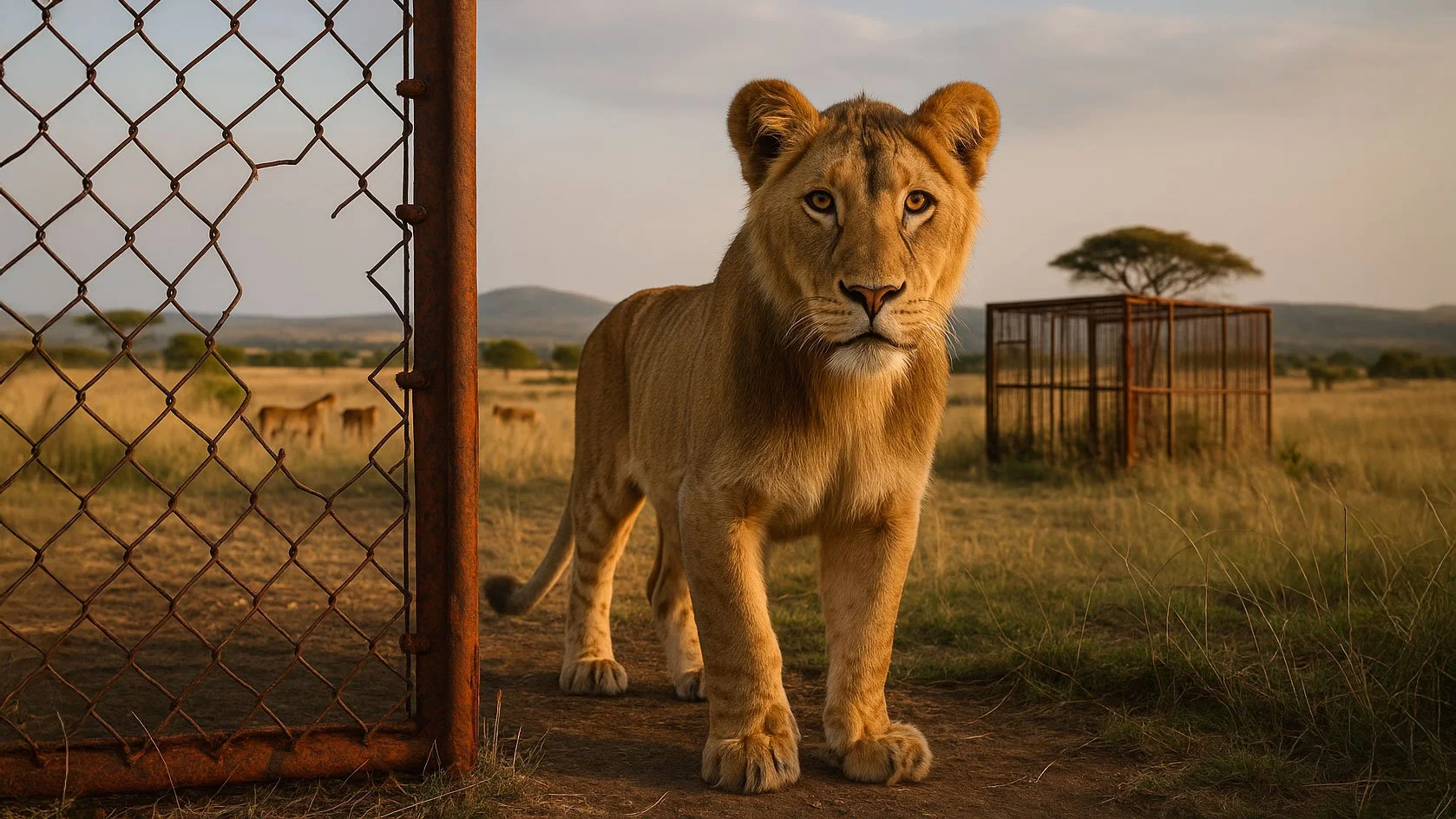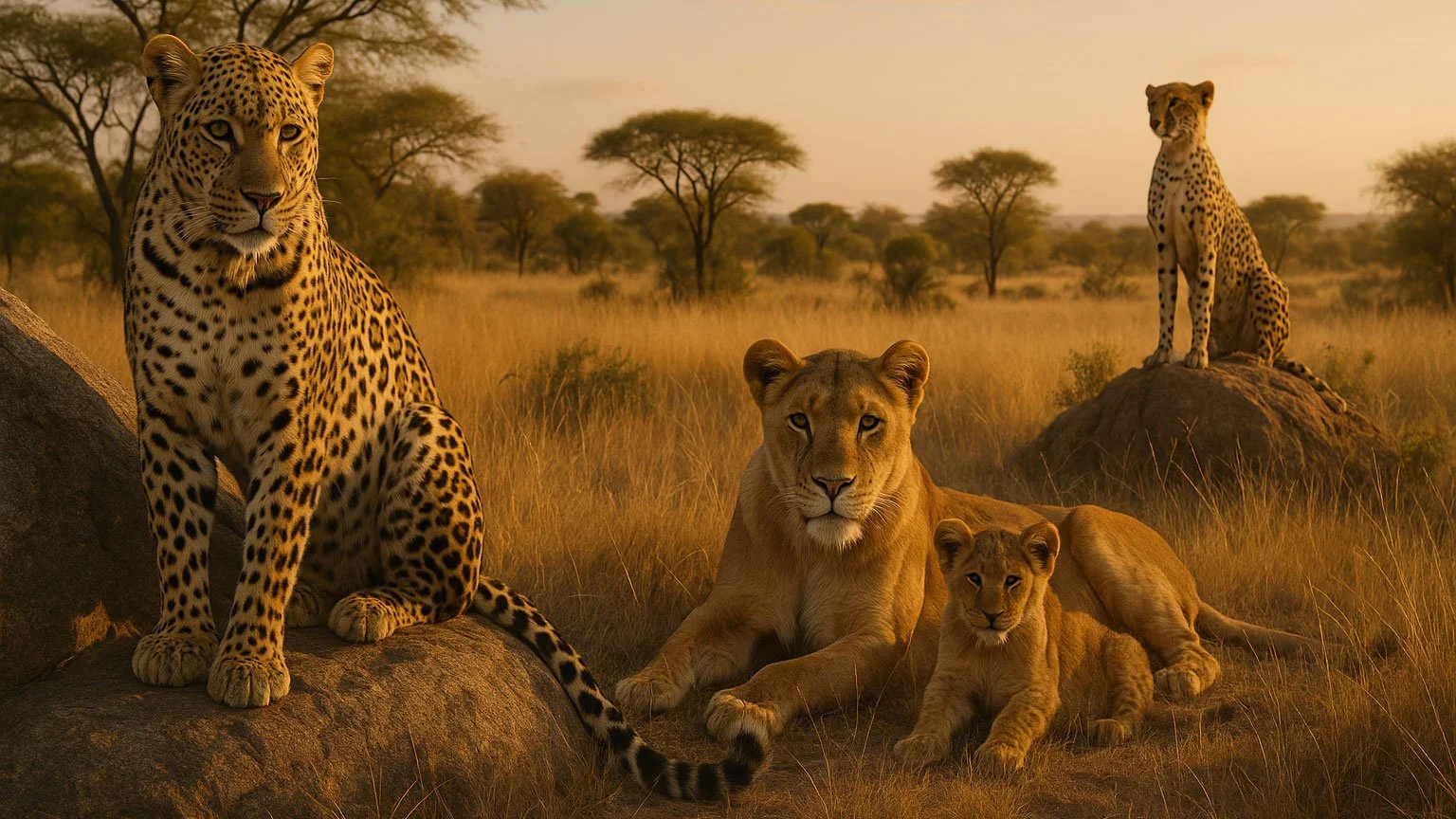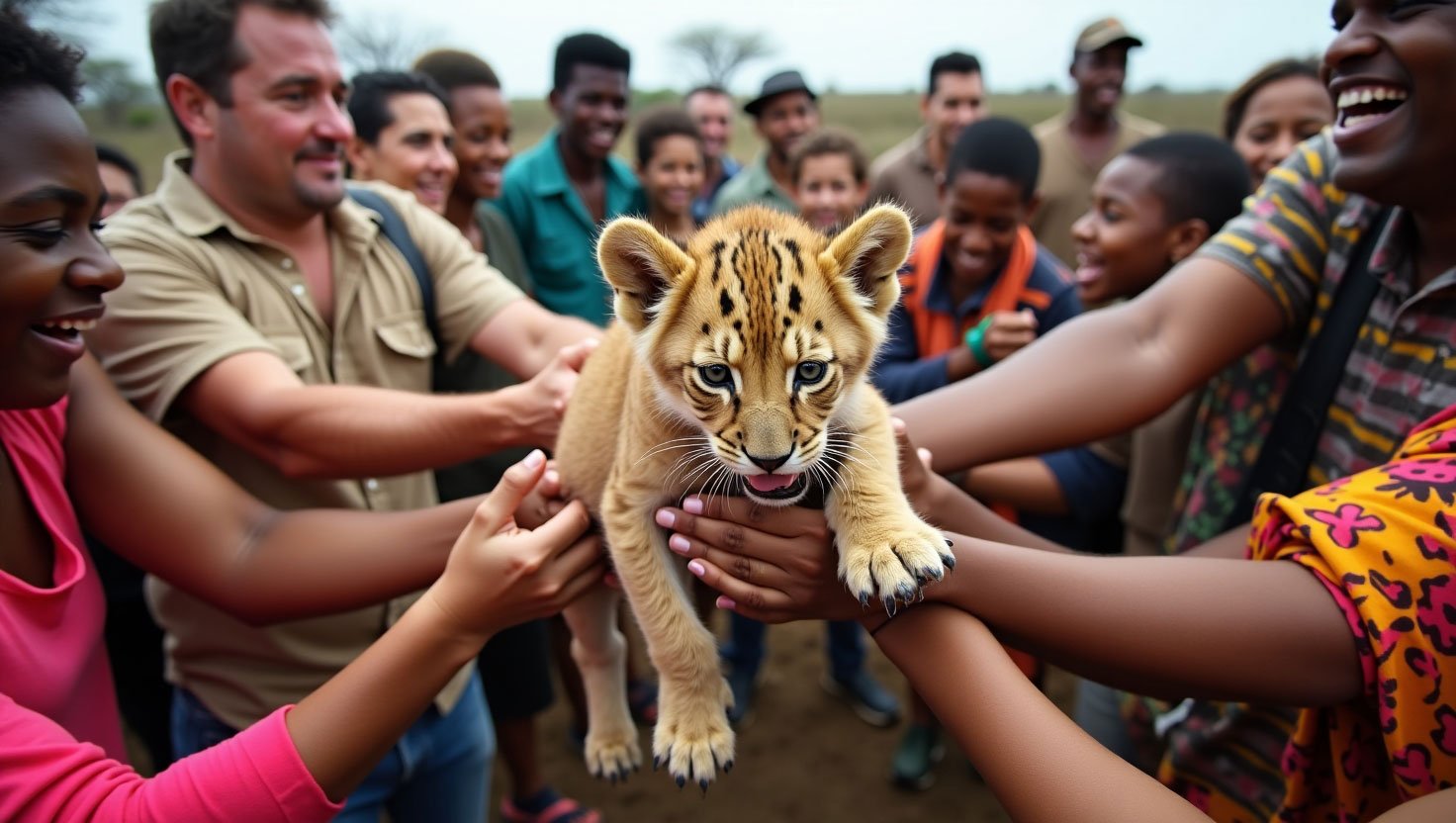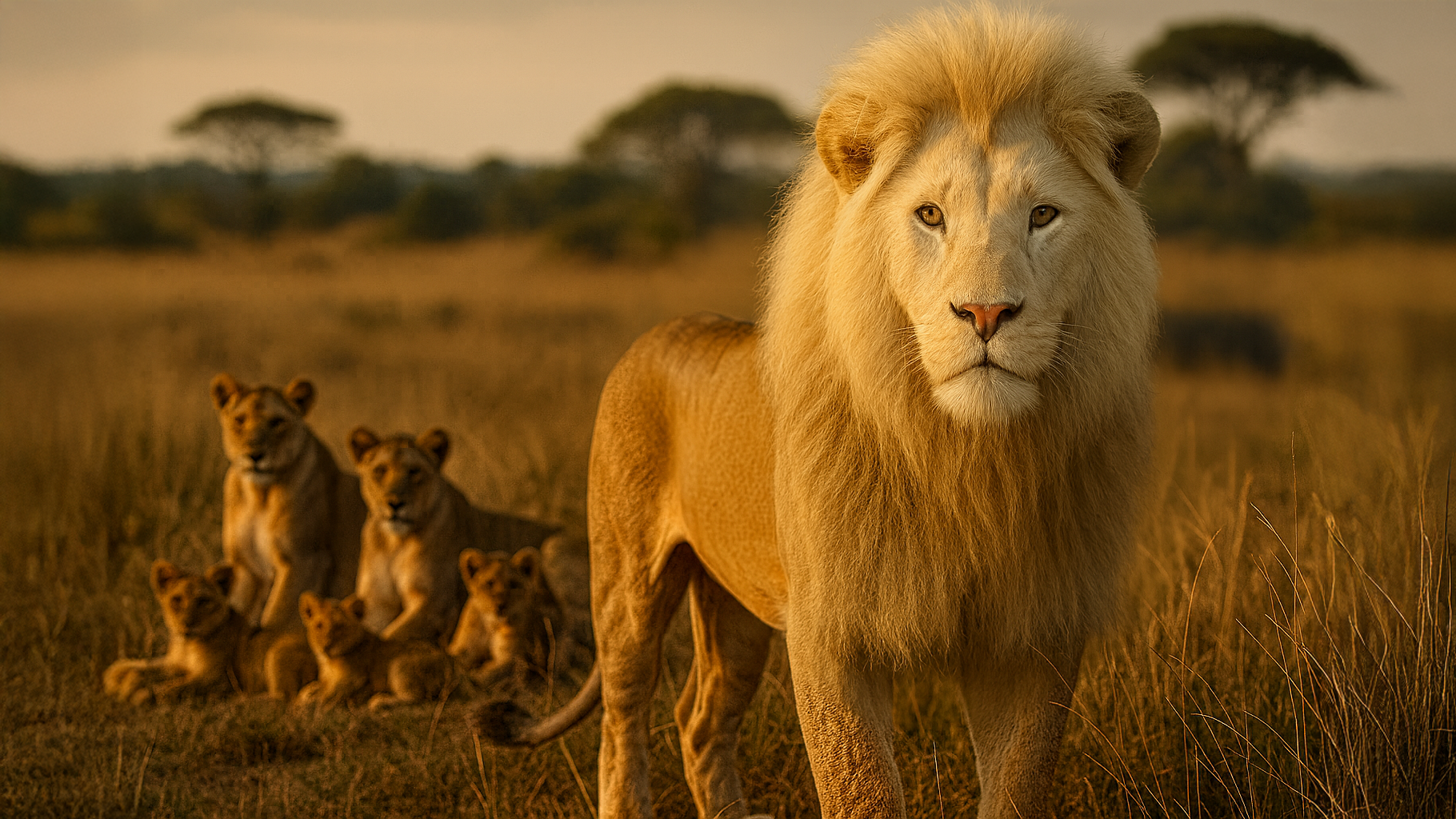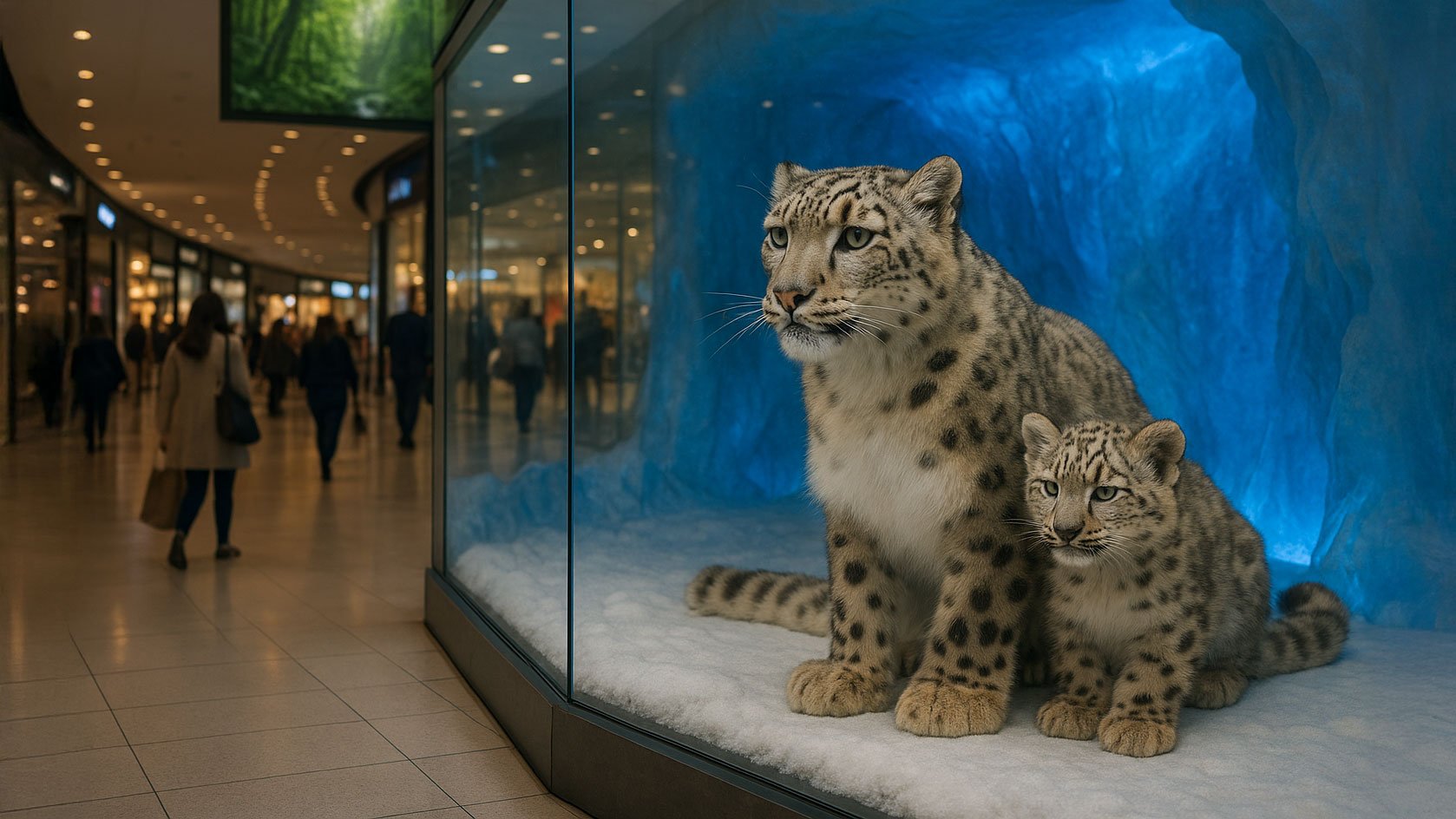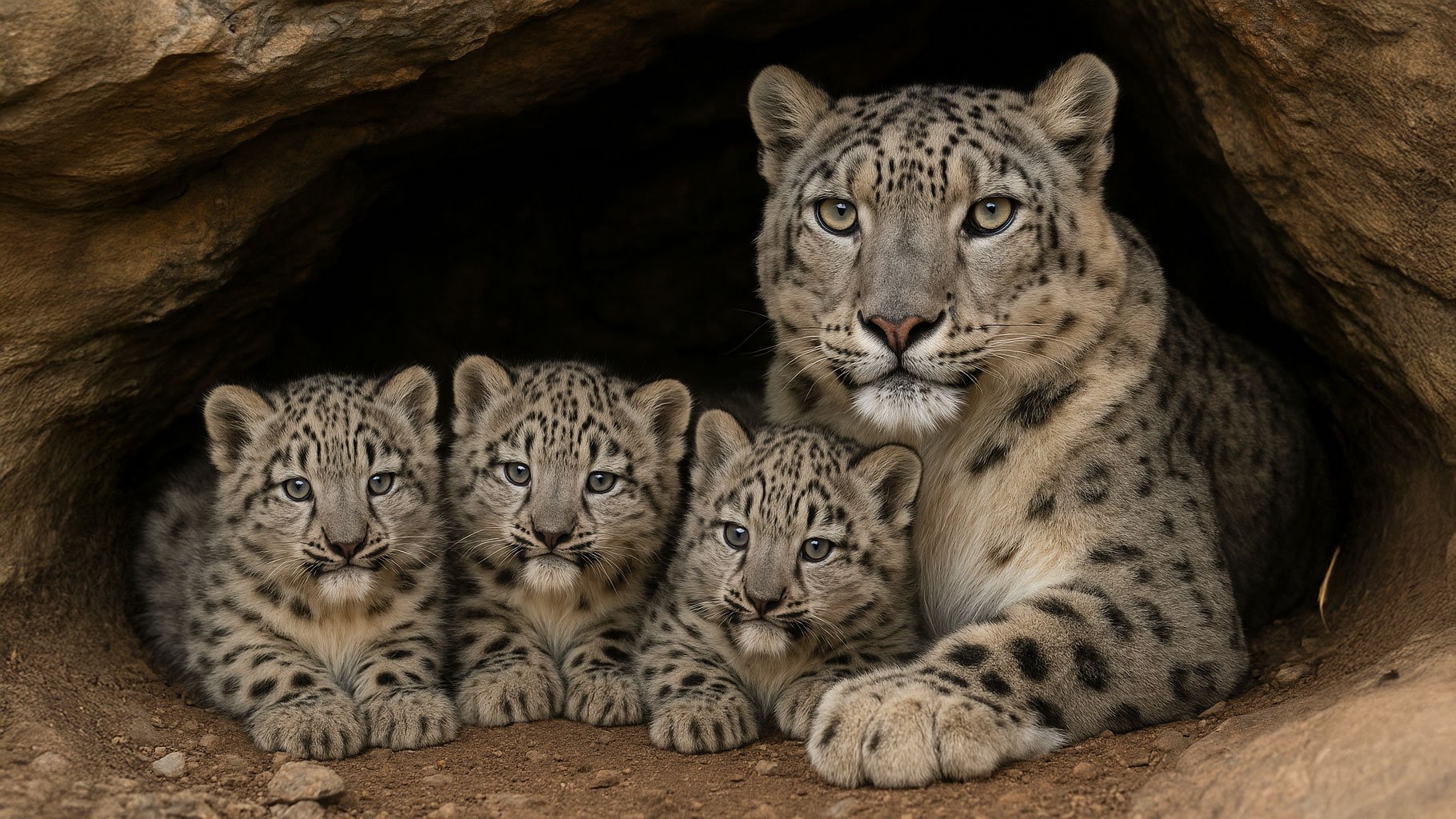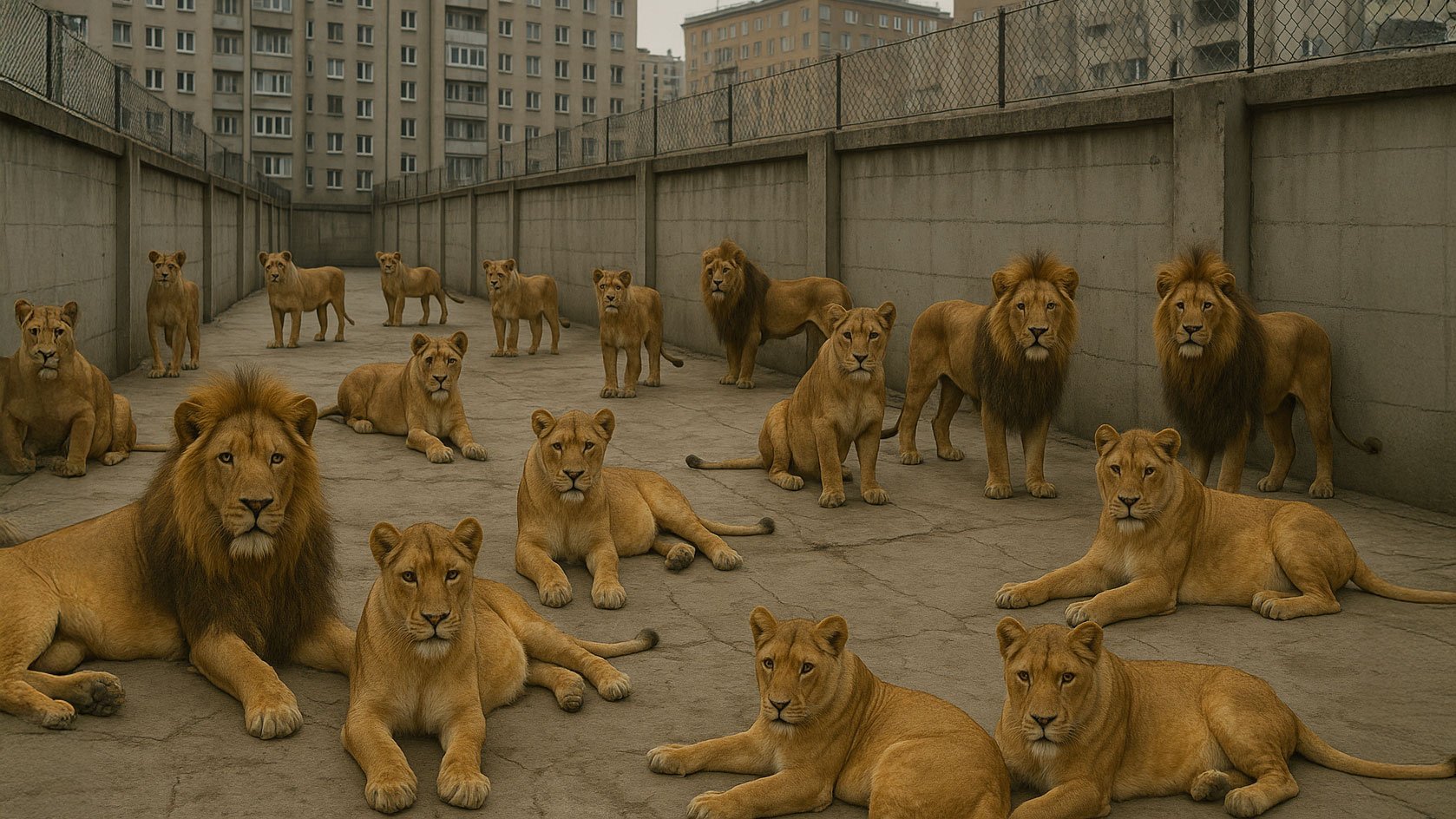Ending the Lion Lie: South Africa’s Bold Leap Toward True Wildlife Protection
In the heart of South Africa, a roaring silence is about to fall.
It’s the sound of cage doors finally staying shut—not to trap lions inside, but to stop the madness from ever beginning again.
For decades, South Africa’s captive lion breeding industry masqueraded as conservation. Tourists came in droves to bottle-feed lion cubs, cuddle them for selfies, or pay big money to shoot adult lions confined in fenced enclosures. These experiences were sold as eco-tourism. As conservation. As education.
But they were all a lie.
Now, the truth is roaring back.
In a groundbreaking announcement, South Africa’s Department of Forestry, Fisheries and the Environment (DFFE) has committed to ending this long-standing wildlife sham by banning the establishment of new captive lion breeding facilities. This shift marks a dramatic break from the nation’s controversial past, moving toward real biodiversity protection, ethical stewardship, and animal welfare.
What’s Being Banned—and Why It Matters
The Lion Prohibition Notice, recently tabled and moving toward final approval, prohibits the creation of new facilities that breed lions for any commercial purposes. That includes:
Canned hunting (shooting captive lions in enclosed spaces)
Cub petting (a gateway to the lion bone trade)
Lion bone trade (which feeds the illegal wildlife market under the guise of traditional medicine)
This move follows recommendations from South Africa’s own Ministerial Task Team Report and public consultation. It’s not just a policy change—it’s a moral reckoning.
Lion cubs, often snatched from their mothers within days of birth, are passed off as orphans to naive tourists. They are manhandled for months, then shuffled through increasingly exploitative stages of life until they are killed for profit. Their bones are exported to Asia. Their dignity, erased.
Undercover investigations have revealed the severe neglect, overcrowding, and abuse these lions face behind the scenes.
And what do these practices do for conservation? Absolutely nothing.
Captive lions have no role in wild population recovery. They cannot be rewilded. Their genetics are often compromised. And the existence of this industry undermines true conservation by blurring the line between protecting animals and profiting from their misery.
A Global Statement from South Africa
“This marks a turning point in our approach to wildlife conservation,” said Minister Dr. Dion George. “We are committed to enforcing clear, effective, and legally robust measures that protect South Africa’s natural heritage”.
The new rules fall under the National Environmental Management: Biodiversity Act (NEM:BA) of 2004. And it’s not just about lions—this is part of a larger national effort to elevate biodiversity protection across species like elephants, leopards, and rhinos.
Provincial governments are now aligning enforcement strategies under this new directive. At the upcoming G20 Environment and Climate Sustainability Working Group meeting in Kruger National Park, South Africa plans to showcase this new policy as a model for other countries facing similar challenges.
What’s Next?
Minister George also confirmed upcoming reforms to the Threatened or Protected Species (TOPS) Regulations, closing loopholes in permitting systems and setting higher animal welfare standards.
This multi-layered overhaul signals a full shift toward sustainable, conservation-based wildlife economies, not commodified cruelty.
What Can We Do?
This story doesn’t end here—and neither should our action.
South Africa’s move shows what’s possible when a nation listens to science, to ethics, and to its citizens. But countless wild cats around the world still suffer in cages for entertainment and profit.
You can help end this cycle by:
Supporting laws like the Big Cat Public Safety Act, which the U.S. passed in 2022, banning public contact with big cats.
Refusing to engage in wildlife tourism that includes cub petting, selfie booths, or big cat performances.
Donating to organizations like Big Cat Rescue, which now funds wildcat conservation around the globe.
Sharing the truth—because awareness is power.
Let’s not just celebrate this step. Let’s make it the new global standard.
In 2014 Carole Baskin interviewed Lisa Horsborough as she shares her experience from volunteering at a facility in South Africa that claimed to be raising white lions and golden lion cubs for release into Kruger National Park. We had been posting articles and videos since 2009 explaining why it was always animal cruelty to have hands on experiences with wild cat cubs and kittens. It's a relief that the rest of the world has finally figured it out, as stated in the above 2025 article.
2025 source https://www.devdiscourse.com/article/other/3506778-sa-moves-to-ban-captive-lion-breeding-as-wildlife-protection-laws-tighten
